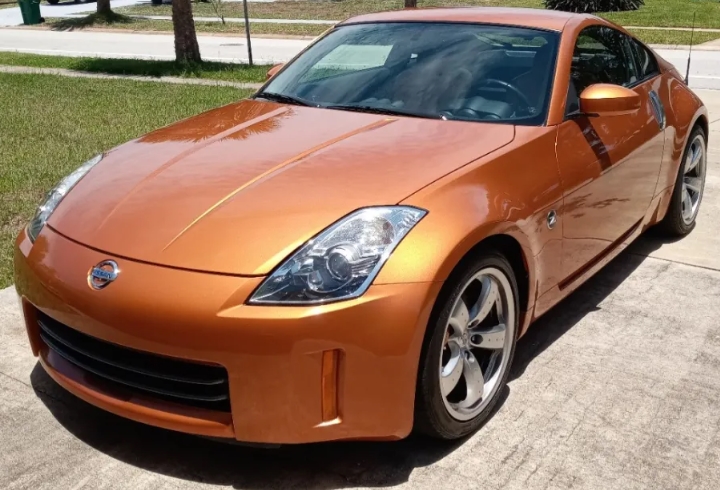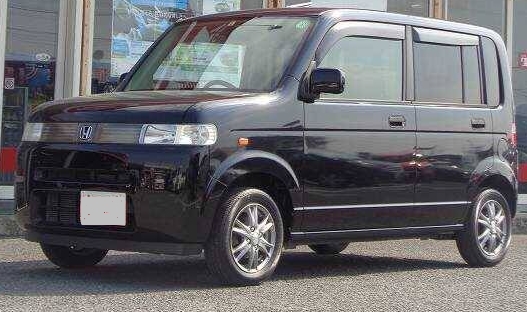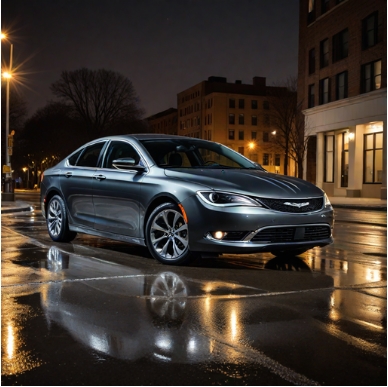Evolution of The Nissan 350Z and 370Z
Of the great lineages in sports car history, few command the same reverence as Nissan’s Z-car. Born from the revolutionary Datsun 240Z in 1969, the Z-car became synonymous with attainable, stylish, and engaging rear-wheel-drive performance. However, by the late 1990s, the increasingly complex and expensive 300ZX (Z32) had run its course in North America, leaving a void in the hearts of enthusiasts and in Nissan’s lineup. For six long years, the Z was dormant. Then, in 2002, a phoenix rose from the ashes: the Nissan 350Z. This was more than a new car; it was a rebirth, a return to first principles that would kickstart a modern renaissance for the legendary nameplate, later evolving into its sharper successor, the 370Z. This is the story of their evolution.
The Rebirth: The Nissan 350Z (Z33) | 2003-2009
When the 350Z (chassis code Z33) debuted for the 2003 model year, the automotive world took notice. Its design was muscular and distinctive, with a long hood, a dramatically sloped fastback roofline, and a short rear deck. It was built on Nissan’s innovative Front Midship (FM) platform, which placed the engine behind the front axle for a near-perfect 50/50 weight distribution, a critical factor in its celebrated handling.
At its heart was the engine that would define a generation of Nissan performance: the VQ35DE. This 3.5-liter, naturally aspirated V6 was a powerhouse, producing a robust 287 horsepower and 274 lb-ft of torque. It delivered a wave of torque from low in the rev range and pulled strongly to its redline, all while emitting a distinctive and throaty exhaust note that became its signature.
Nissan strategically offered a wide range of trim levels to appeal to different buyers, from the budget-conscious enthusiast to the track-day warrior.
Initial (2003) Trim Levels:
- Base: The purest form of the 350Z. It came with the full powertrain, 17-inch alloy wheels, and cloth seats, but lacked features like cruise control and a limited-slip differential (LSD). It was the blank canvas for the aftermarket community.
- Enthusiast: Considered the sweet spot, this trim added an LSD, traction control, cruise control, aluminum pedals, and an auto-dimming rearview mirror.
- Performance: Building on the Enthusiast, this trim added 18-inch wheels and Vehicle Dynamic Control (VDC), Nissan’s stability control system.
- Touring: This was the grand tourer of the lineup. It included all the features of the Performance trim but added leather-appointed, heated power seats and a premium Bose audio system.
- Track: The ultimate factory 350Z at launch. It featured lightweight 18-inch forged alloy wheels by RAYS Engineering, powerful Brembo brakes with gold-painted calipers, and front and rear spoilers for improved aerodynamics. This model came exclusively with a 6-speed manual transmission.
Evolution Through the Years:
- 2004: The 350Z Roadster was introduced, featuring a power-operated soft top that folded neatly behind the seats. It was initially available in Enthusiast and Touring trims, catering to those who wanted the Z experience with open-air freedom.
- 2005: This was a significant year. To celebrate the Z’s heritage, Nissan released the 35th Anniversary Edition. Available in unique “Ultra Yellow” or “Super Black” paint, it featured special badging and bespoke 18-inch wheels. More importantly, it debuted an updated version of the VQ35DE engine, often called the “Rev-Up.” This engine featured revised internals and variable exhaust cam timing, pushing the redline to 7,000 RPM and horsepower to an even 300, while torque slightly decreased to 260 lb-ft. This engine was standard on all 6-speed manual Anniversary and Track models for 2005.
- 2006: The “Rev-Up” 300-hp engine became standard on all manual transmission models. The model year also brought a minor facelift, including updated Bi-Xenon headlights, new LED taillights, and subtle interior material upgrades. 18-inch wheels became standard across most of the lineup.
- 2007-2008: The 350Z received its most profound mechanical update with the introduction of the VQ35HR (“High Revolution”) engine. This was a heavily revised V6, estimated to be over 80% new. It featured a taller engine block, a dual-intake system, and a blistering 7,500 RPM redline. The result was 306 horsepower and 268 lb-ft of torque. Due to stricter SAE power rating standards introduced in 2006, this power figure was even more impressive than it appeared on paper. The new engine required a new hood with a distinctive bulge to accommodate its height.
- The most exciting addition for 2007 was the NISMO 350Z. This was not just an appearance package; it was a factory-tuned weapon. Developed by Nissan’s motorsport division, NISMO (Nissan Motorsport International Limited), it featured an aggressive aerodynamic body kit, a chassis stiffened with additional seam welds, performance-tuned suspension with body dampers co-developed with Yamaha, and a NISMO-tuned exhaust. It retained the 306-hp VQ35HR engine but was transformed into the sharpest, most communicative Z33 ever built for the road.
- 2009: With the 370Z coupe already on sale, 2009 was the final, abbreviated model year for the 350Z, offered exclusively as a Roadster.
.

.
Sharper and More Potent: The Nissan 370Z (Z34) | 2009-2020
After a successful six-year run, the 350Z gave way to its successor, the 370Z (chassis code Z34), for the 2009 model year. The 370Z was an exercise in evolutionary refinement. Nissan’s engineers took every aspect of the 350Z and sharpened it. The car was shorter by 2.7 inches, with a 3.9-inch shorter wheelbase, and its track was wider. Extensive use of aluminum in the doors, hood, and rear hatch made it lighter and more rigid than its predecessor. The design was more aggressive, with boomerang-shaped headlights and taillights that gave it a unique and modern identity.
The heart of the Z34 was the new VQ37VHR engine. Displacement grew to 3.7 liters, and it gained Nissan’s Variable Valve Event and Lift (VVEL) technology, which improved throttle response, broadened the powerband, and increased fuel efficiency. Power jumped significantly to 332 horsepower and 270 lb-ft of torque.
One of the most talked-about innovations was SynchroRev Match. Available on manual transmission models equipped with the Sport Package, this system would automatically “blip” the throttle on downshifts to perfectly match engine revs for smooth, fast gear changes—a technology previously reserved for high-end exotics.
Initial (2009) Trim Levels and Packages:
- Base: Similar to its predecessor, it offered the core Z experience with 18-inch wheels and a potent powertrain but was light on creature comforts.
- Touring: The luxury-oriented model, adding power-adjustable heated leather seats, a Bose audio system, and Bluetooth connectivity.
- Sport Package: Crucially, this was an add-on package available on both Base and Touring models, not a standalone trim. It was the must-have option for enthusiasts, bundling a viscous limited-slip differential (VLSD), larger Akebono sport brakes, 19-inch RAYS forged wheels, front and rear spoilers, and the aforementioned SynchroRev Match for manual models.
Evolution and Special Editions:
- 2010: The 370Z Roadster was introduced, featuring a faster-operating and better-insulated soft top than the 350Z. The NISMO 370Z also made its full-year debut. Like the NISMO 350Z, it was a comprehensive performance upgrade. Its VQ37VHR engine was retuned with a special exhaust and ECU, bumping power to 350 horsepower. It featured a radical, function-first aerodynamic kit, a reinforced chassis, and a track-focused NISMO suspension. Initially, it was offered only with the 6-speed manual transmission.
- 2012: To commemorate the original 240Z’s racing success in America, Nissan released the 40th Anniversary Edition. Limited to 1,000 units, it came in a special “40th Quartz” paint with a rich red leather interior, red brake calipers, and unique badging.
- 2013: The 370Z received its first mid-cycle refresh. The front fascia was updated with a new bumper incorporating vertical LED daytime running lights, and new 18-inch and 19-inch wheel designs were introduced.
- 2015: This year brought the most significant update to the NISMO model. It received a complete exterior redesign, heavily inspired by the GT-R supercar. The new body kit was more integrated and aerodynamically efficient. Inside, it gained new, heavily bolstered Recaro seats co-developed with Nissan. Critically, for the first time, the NISMO 370Z became available with an optional 7-speed automatic transmission with paddle shifters.
- 2018: A minor update for the standard models saw the introduction of smoked headlights and taillights, a new high-performance clutch from EXEDY for manual transmission models, and a new 19-inch wheel design for the Sport trim.
- 2020: As a final send-off for its long production run, Nissan offered the 50th Anniversary Edition. This was an appearance package for the Sport trim, paying homage to the Brock Racing Enterprises (BRE) Datsun 240Z race cars of the 1970s. It featured a distinctive two-tone livery in either white with red accents or silver with black accents.
A Legacy of Modern Performance
The Nissan 350Z and 370Z together represent a remarkable two-decade chapter in the Z-car saga. The 350Z was the bold and successful revival, a car that brought raw, V6-powered, rear-wheel-drive purity back to the masses. It was celebrated for its balanced chassis, charismatic engine, and incredible value. The 370Z was its more athletic, intelligent, and refined successor. It took the fundamental formula of the 350Z and made it lighter, faster, and more technologically advanced without losing the analogue soul that made its predecessor so beloved.
While the 370Z’s long production run eventually saw it outpaced by newer competitors in terms of technology and interior design, its core appeal never faded. Both the Z33 and Z34 stand as testaments to a classic sports car philosophy: a powerful front engine, two seats, and drive sent to the rear wheels. They were the bridge connecting the Z’s legendary past to its electrified future, earning their rightful place as modern Japanese icons.







